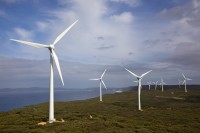WA has some questions to ask about its energy future
Monday 17 Jun 2019WA is facing major questions about its energy future.
The traditional energy system, with electricity supplied to customers through a linear supply chain of generation, transmission, distribution, and retail elements, is increasingly becoming obsolete.
The age of large electricity generators located far from cities and towns, transmitting power through high voltage lines is likely a thing of the past.
Over the last few decades, we’ve seen a revolution in the way electricity is supplied and used through the installation of photovoltaic and battery systems. We already have more than a quarter of Western Australian households using an installed solar system.
It’s not just households. We’ve seen the development of large-scale renewable generators across the state, which are now responsible for supplying an increasing amount of our electricity.
By and large, this has been a good thing for Western Australians. Renewable energy has created more autonomy and greater access to low cost, low emissions energy.
But with this transformation of our energy system comes challenges.
Unlike the traditional model, the integration of these new technologies into our energy system has seen the supply of energy become intermittent and at times unpredictable. The impact of the new elements has forcing existing system elements to adapt and function in ways that were never intended or designed for.
The overall effect of these factors is that its becoming more difficult to maintain the security, reliability, and affordability of our power system.
So with the challenges before us, it’s vital we start to think about what the future of energy in WA might look like.
How will we integrate renewable energy technology into our system to create more energy security and reliability?
What does the transition from our current generators to newer technology look like?
How do we make that transition in the most beneficial way to our economy?
We’re not the only ones asking these questions.
Last month, Energy Minister Bill Johnston announced the formation of the Energy Transformation Taskforce. The State Government has charged this group to help deliver the Energy Transformation Strategy, which will guide the State Government response to these challenges and guide the plan for the future of our energy system.
As part of this process, the taskforce will develop a Whole of System Plan to maximise the environmental benefits and minimise the costs of the transition.
This plan will be accompanied by a Distributed Energy Resources (DER) Roadmap, which will guide the integration of onsite generation (solar panels), battery storage, and future technologies such as electric vehicles.
2019 is poised to be a pivotal year for our state. It’s essential that the people of WA have a chance to think through these questions and have their say on what the future of our energy system should look like.
Over the coming months, we’ll be looking in-depth at some of these challenges and what WA will need to consider as we map out a plan for the next generation.
If you haven’t already, follow us on Facebook and Twitter and join our mailing list so you can stay up to date with our latest work and news from what’s set to be a big year for energy in WA.

